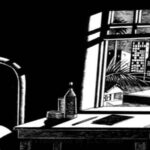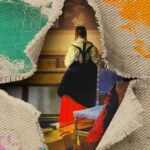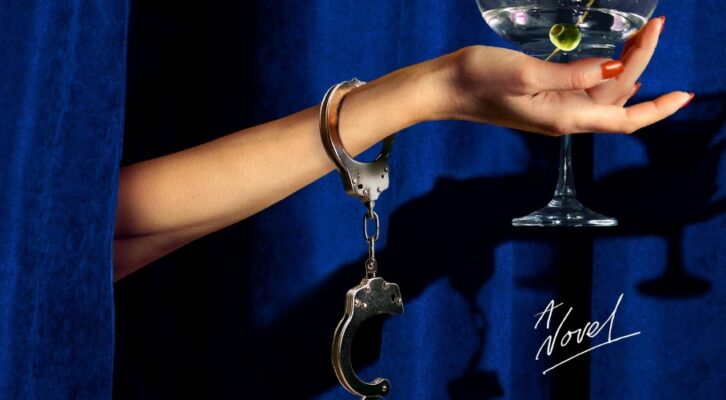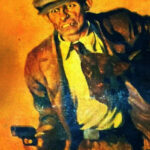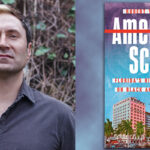The Maggie Nelson Test for Lesbian Dating Success
Jenn Shapland on The Argonauts and Building a Life
“What books should I read?” A asked. I sat on the floor of the blank but bougie living room of a house she miraculously owned, playing with her small dog. She was paging through a catalog for blinds, in the process of redecorating on a level far beyond my means. The question itself should have been a dead giveaway: if you have to ask, you’ll never know. Instead, the next time I got into her Prius I slid a stack of books into her arms, Maggie Nelson’s The Argonauts nestled in as though an afterthought. Hardly! Heart raced as I thought of her reading it—It’s a sexy book!—and reading me in it.
I had a habit of doing this, sharing deep parts of myself with someone I’d just met, hurrying things along. Few things feel as vulnerable, as fraught, as precious early in a relationship as sharing your favorite books, movies, songs. You don’t want to be judged for your love of Carole King, or your queer root (E.T.). And you want another person to love what you love—to see you in it, and love that you. Whence the mix CDs, painstakingly arranged and burned, track listings scrawled in tiny script on notebook paper and tucked into the jewel case. Each track burns with a question and a promise. Do you love this? It can be us.
The Argonauts is a book about queer love that I loved enough to recommend as a staff selection at the bookstore where I worked, enough to insist my best friends read it, mostly because I couldn’t stop talking about it—I needed them to read it so we could talk, really talk. Enough to quote ad nauseam on my Instagram. “There is so much to be learned from wanting something both ways,” Nelson writes.
A was a lawyer, a good conversationalist, cute, and, best of all, she had her life together, more than I could say for most of the women I’d met lately—including one who showed up to our first date already drunk. I introduced this put-together person to all my friends, even as it became obvious that she wasn’t interested in being something other than a friend to me; that line between friendship and dating can be fuzzy, can feel infinitely malleable, especially for queer people. A few days of texting with A passed with no mention of the book. Feeling confident one day, I sent her an essay of mine about learning to speak my desires plainly—supplementary reading. Finally I asked her about Argonauts, dying to know what she thought. What I was really dying for was a confirmation of the depth of her affection. “I read thirty pages and couldn’t get any further,” she texted.
C mentioned that she’d recently picked up a book based on my staff selection. You know what book.Was it the opening lines about ass-fucking? Was it the personal writing I’d bravely shared? I’ll never know. I had made myself vulnerable, just like Brené Brown says to, and the relationship, not even begun, was so over.
Falling in love in the age of mechanical reproduction means falling in love with stuff. Sure, you fall for a person’s unique qualities, ideas, mannerisms, passions, butt. But you also fall in love with their sweaters, their record collection, their top movies, their sneakers. You fall in love with their favorite books—or you don’t. While I was dating women I met on Tinder in Austin in the mid 2010s, The Argonauts became, by accident, a sort of litmus test. Sharing it with someone made the relationship’s fate instantly clear. The book was a strip of paper dipped in the budding relationship and then dipped in iodine for a response, a chemical reaction, as I stood by impatiently, awaiting the blush of true colors.
When I went to meet B for a brunch date, our first, she was sitting outside on a bench reading. The magenta block letters on a black background were unmistakable, even from the parking lot. Destiny! my heart cried. On the heels of rejection, I snatched the bait with both hands. We immediately had so much to talk about. I was leaving soon on a road trip by myself to some hot springs in west Texas, one of my favorite places, and I’d known her less than two weeks, so naturally, I asked her to come.
She was studying to be an elementary school teacher, brainy and full of quirks. An affinity for graphic novels, a late-night confession of love for Pedro the Lion. Her dog stayed in its open cage when she left the house, emerging only upon her command. When her Subaru bottomed out on the dirt road in the middle of the canyon, and we had to walk with little water in the July sun toward the hot springs, I began to panic. Not about the imminent danger of running out of water, but about the long stretches of silence. Somehow we were running out of things to talk about already. How could this be? We’d been bursting with language only days before.
Forty-five minutes later, miraculously a glimmer appeared on the otherwise carless road. A couple leaving the springs saw us, turned around, and picked us up. By the time we got her car pulled out of the rut and got to the pool, I saw she was reading something else. I don’t remember what. What was it we’d had in common? It had felt like everything.
Months later, relaying the story to friends, they would tell me I was a fool, that our “destined” connection at brunch was a ruse. She’d done some pre-first-date detective work and seen the book on my Instagram. She was baiting me and I fell right for it.
I choose not to believe this.
True love arrived when the book was just a point on a line leading everywhere, a conversation starter that led to millions of things shared.My friend Katie, who’d read the book soon after we met as residents at Vermont Studio Center, was outraged by A and skeptical of B. She immediately saw the power of the test and followed my lead, giving a copy to each of the straight men she dated. The one who passed, who went out and bought a copy of his own, is the one who stuck.
True love arrived when the book was just a point on a line leading everywhere, a conversation starter that led to millions of things shared. It started when I swiped right twice on Tinder, and she swiped left both times. We already knew each other from working together years previously as interns in an archive (the reason she gives for those swipes left). I decided to try the old-fashioned way and invited her and another ex-intern over for porch drinks. She’d brought a lentil salad, and I made an immediate foible, saying that I couldn’t eat lentils. One inauspicious beginning after another. As we sipped the sidecars Andi had mixed a few hairs too strong, and I complained about my recent dating woes, C mentioned that she’d recently picked up a book based on my staff selection. You know what book.
This time I was tentative, my expectations low. She didn’t all-out love the book like I did, and that didn’t matter. Our conversations about it spun off in all directions, like all our conversations seemed to. Just like in the book, we came at things from different perspectives. She was an art historian, had just written a dissertation about Andy Warhol’s films, and was jaded with academia. I was trying to find my way out of literary criticism and toward other forms of writing, and to me Nelson’s book was a map to a different life. A queer life, a writing life. As C and I talked, it became clear that much more was at stake for me in this book than taste or argument. Gradually our conversations moved past the book and into the terrain of queerness, time, productivity vs. aimlessness, how to make and live a life on the margins. As we talked, the life we would build together began to take shape.
We went to see Maggie Nelson read, ironically our first official date, and then snuck off to the on-campus Turrell skyspace to sit and stare at the shifting clouds in silence. Soon enough she shared Antonioni’s trilogy and Monica Vitti, and I pressed Claudia Rankine into her hands. We were often coming from different places and had an age difference just enough to keep things surprising. Patience was key. Certain touchstones had to be explained: her Liz Phair for my Dunkaroos. The Argonauts, like all the books and movies and snacks and songs we shared, was just a cipher for our ability to connect, to find common ground and meaning we could build on. Each of our copies sits on a shelf in our house in Santa Fe, where we moved together less than a year later. The collection, which we refer to as the Lesbian Library and frequently lend from, has overgrown its shelves, and most of our doubles have found their way into the donation pile, but for this one, we kept our own copies.
Objects make love visible. They give us an archive, a timeline with clear milestones. They tell a story that would otherwise be almost impossible to see or even narrate. When we saw Carol in the theater, twice. When she finally convinced me to read The Secret History. When I wore her beloved crimson Alabama t-shirt home and didn’t give it back. Without them all the subtle shifts in feeling and meaning would just be in our heads, lost to time and its erasures. The things we keep around keep us intact.
__________________________________
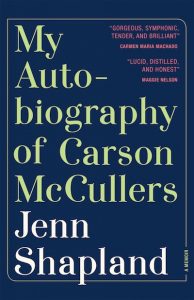
My Autobiography of Carson McCullers by Jenn Shapland is available now via Tin House.









